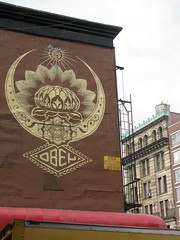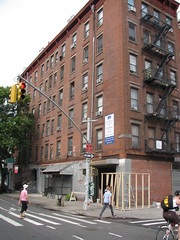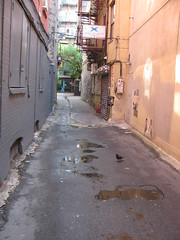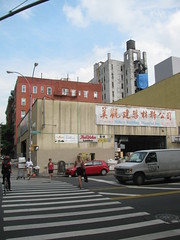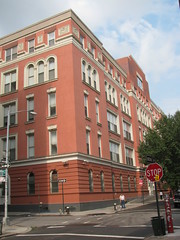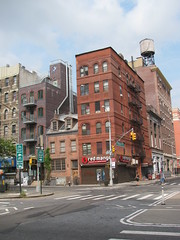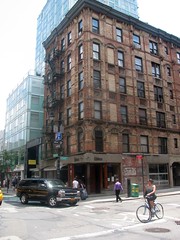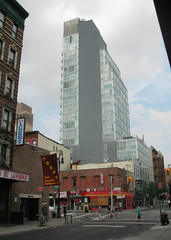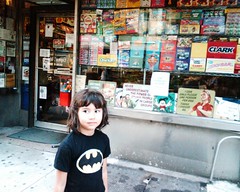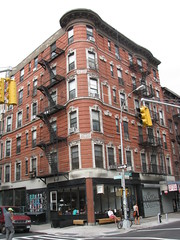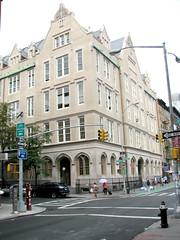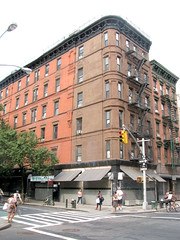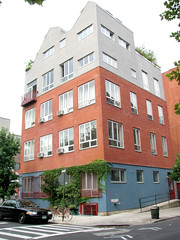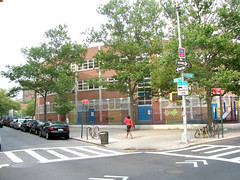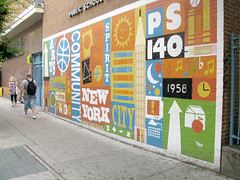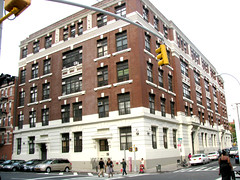South:
85: City Flavor, leather
87: Baishakhi Food Corp, Bengali grocery
Site of First Roumanian-American Congregation
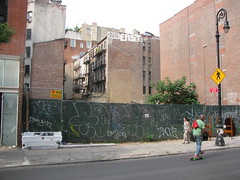
89-93: This 2,000-seat sanctuary
was originally built around 1857
as the German Evangelical Church, designed to
convert Jews, it was bought in 1864 by Shaaray
Hashomayim, New York's oldest Orthodox German-Jewish
congregation. It reverted to a church in 1890,
when a Methodist mission society moved the
Allen Street Memorial Church here. Its last
congregation, which bought it in 1902, worshipped
here until 2006, when a roof collapse apparently
rendered the building unsalvageable--a tremendous
loss to the neighborhood.
The building was noted for its acoustics,
earning it the nickname "the Cantor's Carnegie
Hall." Opera stars
Jan Peerce (Jacob Perelmuth) and
Richard Tucker (Reuben Ticker) did some of
their earliest singing here.
College Settlement House/Talmud Torah
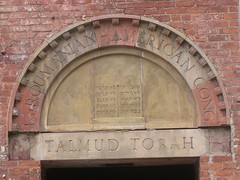
95: This townhouse built c. 1840
became, in the 1890s, the College Settlement,
founded by activist Vida Scudder to improve
the neighborhood by bringing in Smith College
graduates. Later it was the next-door
synagogue's religious school, known as Talmud
Torah, whose name can be seen above the door.
For a while it was a private dwelling;
Janine Jackson, host of the radio show CounterSpin,
lived here in 1985. Now it's the hip nonprofit
gallery Participant Inc.
97: Felix Tailor Shop

99 (corner): Wolfnight's wraps was Three Monkeys, and before that Paul's Boutique, a
little cafe named for the Beastie Boys' album,
whose
cover was shot on this corner. (The original
Paul's Boutique was an imaginary men's clothing store
in Brooklyn.)
|
